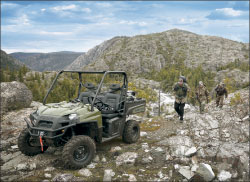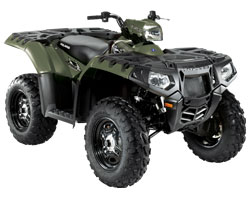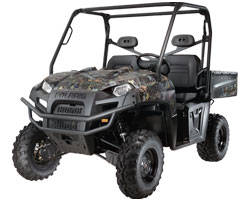How to Conduct a Herd Monitoring Profile
Improving habitat is only one of the challenges of managing a whitetail property under QDMA guidelines. Determining an adequate harvest of the right deer is just as essential as providing food and cover, and the best way to discover that is to create a rough profile of the deer living on your property. This process—called “herd monitoring”—will help you set harvest goals each year. Here’s how to start.

First, don’t worry about taking a census. You’ll never be able to count every deer. Rather, your goal is to create a rough profile of your herd that includes buck/doe ratios, age structure, herd health and reproductive success. Start by simply observing and recording the number, sex, location and estimated age of every deer you see, either while observing food plots or hunting. Write your observations in a journal.
If your personal observation time is limited, invest in one or two trail cameras, which will help survey deer numbers 24/7. For best results, place a camera near a deer-friendly site, such as a food plot edge, mock scrape or mineral lick. Mount the camera on a tree trunk, fence post or stake within 25 feet of where you expect deer to be. Leave the camera out for five to seven days before checking it for photos. Remember, you’ll have the best success if you treat your camera sites like hunting stands— limit the number of your visits and time them so deer are least likely to be present. Also, driving to your camera sites in a Polaris Ranger XP® will reduce the time you spend at each location and give you another excuse for an enjoyable ride! Electronic fuel injection guarantees fast starts and top performance, and new front Dual A-Arm suspension design delivers improved ride and handling.

Another method for determining deer numbers is to monitor habitat. The presence of a “browse line”—the absence of brushy vegetation and tree limbs as high as deer can reach—indicates an overabundance of whitetails and means higher harvests are needed. Also, inspect food plots to determine how heavily deer are impacting their growth. Here again, signs of overuse mean deer numbers need trimming. Install exclusion cages (small wire structures that prevent a deer from eating) in your food plots, will reveal how your plants would look minus hungry whitetails.
The final aspect of herd monitoring is to record information about the deer you harvest. Here’s where your logbook/journal comes in handy again. Record the sex, weight and estimated age of every deer you shoot. Viewed over time, this information will reveal trends in the numbers, composition (bucks vs. does, young vs. old) and health of your whitetail herd. If you have any questions about your observations, an excellent resource is an issue of “Quality Whitetails,” which is published by the QDMA.
ADVERTISEMENT
Related Vehicles
The Polaris Sportsman® 850 XP
Sportsman XP Facts:
- 850 SOHC Twin EFI Engine
- Available Electronic Power Steering
- Legendary Smooth Rolled Independent Rear Suspension (IRS)
- Superior Ergonomics
Learn More about the Sportsman XP >>
The Polaris RANGER 800 XP®
Ranger 800 XP Facts:
- New! 800 Twin EFI Engine
- Available Electric Power Steering
- Dual A-Arm Front Suspension
- Legendary Smooth Independent Rear Suspension (IRS)
Deer Management Archive
2009 Archive
- How to Judge a Trophy Buck's Potential
- Kick-Starting Your Management Plan
- Mapping Your Whitetail Hunting Paradise
- Conduct a Herd Monitoring Profile
2008 Archive
Deer Population by State
Weekly QDM Tips
Take a camera survey of your herd in the pre-season. Mount trail cameras near high-traffic deer areas such as mineral licks, food plots, or fence crossings. Record the number, sex and approximate age of every deer you “shoot”, then compare that data with your field observations come hunting season.







